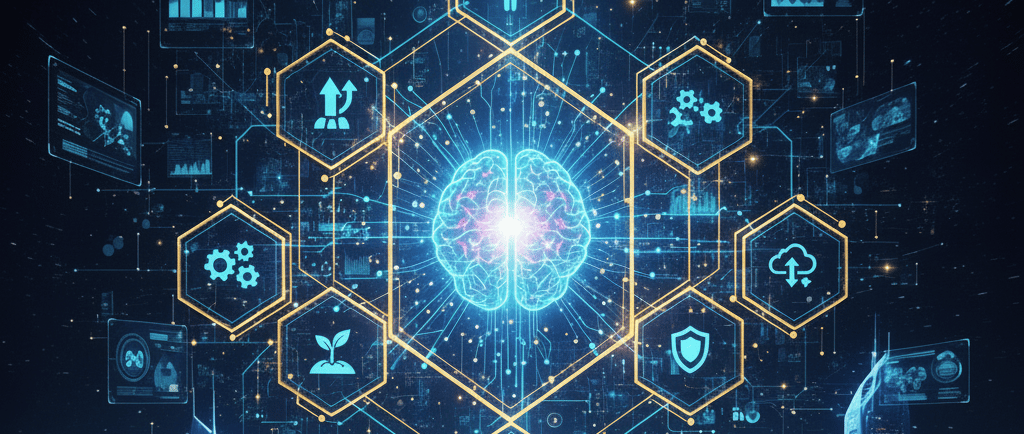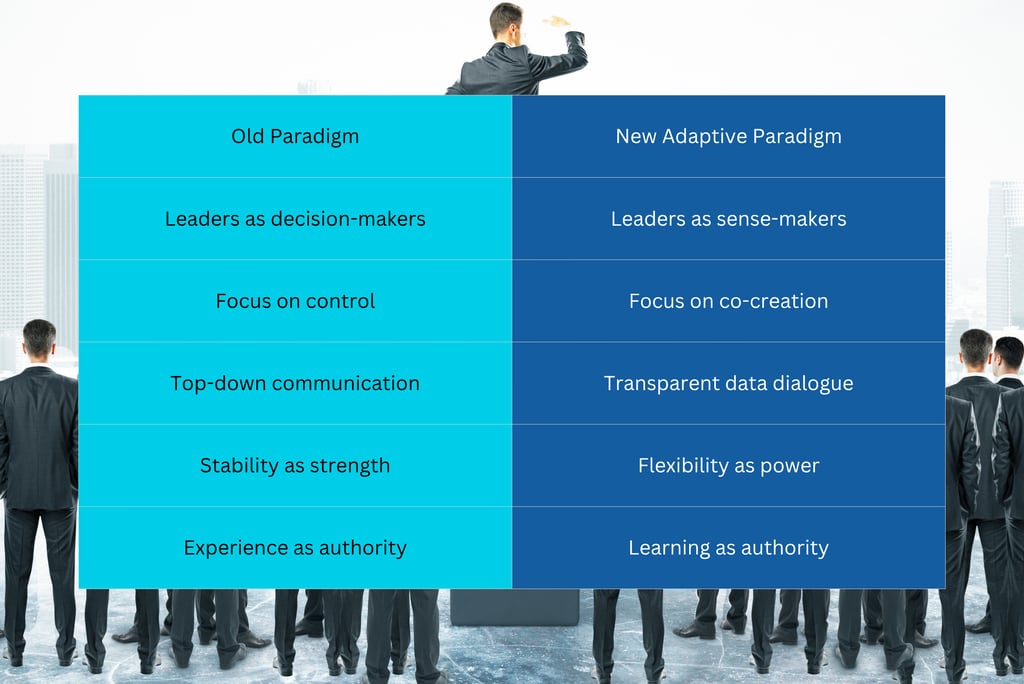Adaptive Leadership Frameworks for a Generative AI-Driven Organization: Why Emotional Courage, Cognitive Agility, and Data Literacy Will Define the Leaders of Tomorrow
Blog post description.
LEADERSHIP AGILITY
Nivarti Jayaram
10/10/20254 min read


Let’s start with a confession:
Most leaders are trying to lead a future that hasn’t arrived yet — using tools that were built for the past.
We’ve been trained to lead through experience. To rely on our instincts, our networks, and the patterns we’ve seen before. But here’s the catch: in the age of Generative AI, those patterns are being rewritten in real time. The half-life of expertise is shrinking. The playbooks are changing faster than the ink can dry.
And yet… this is not a story about losing control.
It’s about learning a new kind of leadership — one that is adaptive, humble, and deeply human.
1. When Leadership Meets the Machine
Generative AI doesn’t just automate work. It amplifies cognition.
It can summarize meetings, generate insights, predict outcomes, and even simulate decisions. But here’s the paradox — while AI expands the range of what’s possible, it also exposes the limits of what we know.
Leaders are now confronted with a new dynamic:
AI gives speed, but not always sense.
It can tell you what’s likely, but not what’s right.AI gives patterns, but not purpose.
It can predict behavior, but it can’t define values.
That’s where adaptive leadership comes in.
The adaptive leader doesn’t ask, “How can AI replace us?”
They ask, “How can AI extend us?”
2. The Shift: From Command to Curate, From Direct to Dialogue
In a GenAI-driven enterprise, authority no longer comes from having the answers. It comes from asking better questions.
Adaptive leaders move from commanding certainty to curating curiosity.
They create ecosystems where both humans and machines learn — together.
Let’s break that down.
This is a seismic shift. It means leaders must learn to navigate feedback loops not just from people — but from models. Bias alerts, model drift, data anomalies — these become new forms of feedback. The best leaders treat them the same way they treat a teammate’s opinion: with curiosity, not defensiveness.
3. The New Leadership Operating System
Traditional leadership models like “Sense and Respond” still hold power, but they need a software update for the GenAI era.
Here’s the new version:
Sense — Interpret — Respond — Reflect — Realign
Sense:
Leverage AI to surface signals across the ecosystem — market sentiment, customer behaviors, operational anomalies.
But remember: sensing isn’t just about data. It’s about empathy.
What are people feeling, fearing, or hoping for that the data can’t see?Interpret:
Collaborate with humans and machines to interpret meaning.
Recognize bias in both — your own and the model’s.
Ask, “What could we be missing?” before asking, “What should we do?”Respond:
Make decisions fast, but hold them lightly.
Pilot, test, and adapt. Replace “big bets” with “safe experiments.”Reflect:
Treat model outputs like feedback — not verdicts.
Build in moments of reflection where teams examine how decisions were made, not just what decisions were made.Realign:
Continuously adjust goals, metrics, and learning loops.
In a world of shifting data and emergent patterns, alignment is not a one-time event — it’s a living process.
4. The New Skillset: AI-Aware Leadership Competencies
Let’s be honest — most leadership competency frameworks were designed for the industrial or digital age, not the intelligent age. The next generation of leaders will need an expanded set of skills that bridge human empathy with machine intelligence.
Here’s what that looks like:
a. Cognitive Agility
The ability to pivot between intuition and data; to challenge your own mental models when new information emerges.
“Strong opinions, loosely held” isn’t a cliché anymore — it’s survival.
b. Emotional Courage
The willingness to say, “I don’t know,” even when you’re expected to. To let AI reveal your blind spots without eroding your confidence. This is leadership that owns imperfection — publicly and bravely.
c. Data & AI Literacy
Not coding skills — comprehension skills. Understanding how generative models work, where bias creeps in, what “explainability” means, and how to question outputs intelligently.
d. Psychological Safety Building
As AI enters more workflows, fear of being “replaced” grows. Leaders must create spaces where people feel safe to experiment, fail, and partner with AI without judgment or anxiety.
e. Ethical Judgement
Knowing when not to use AI. Being able to weigh performance against principles — privacy, fairness, accountability. In the future, leaders won’t just make strategic decisions; they’ll make ethical ones every day.
5. Culture Change: From Efficiency to Intelligence
Adaptive leadership is not a solo act — it’s a cultural operating system.
AI doesn’t make your culture smarter. Your culture makes your AI wiser.
If the culture values reflection, curiosity, and transparency, AI will amplify those.
If the culture rewards control, silence, or vanity metrics, AI will amplify that too — faster.
The adaptive organization builds “learning loops” into everything it does.
Post-mortems become pre-learning sessions.
Metrics evolve into meaningful conversations.
And dashboards don’t end discussions — they start them.
6. The Human Edge: Leading with Empathy in an Algorithmic World
Brené Brown reminds us that “Vulnerability is not weakness; it’s the courage to show up when you can’t control the outcome.”
That’s never been truer than today.
As AI models evolve, the one advantage humans will always have is connection.
Empathy, storytelling, trust — these are not “soft skills.” They’re strategic assets in an age where machines can generate content but not compassion.
Adam Grant often says, “The best leaders are not know-it-alls, they’re learn-it-alls.”
That’s the mindset of adaptive leadership. Curious. Courageous. Constantly evolving.
7. The Future of Leadership is Co-Intelligent
Let’s reimagine leadership not as the art of knowing more than others, but as the practice of learning faster together.
In a Generative AI-driven world, leadership agility will not be about outsmarting the machine but about partnering with it — with wisdom, humility, and heart.
The question for every leader today is not:
“Will AI replace me?”
It’s:
“Can I evolve fast enough to lead in partnership with intelligence that never sleeps?”
That evolution starts not in your tech stack — but in your mindset.
Call to Action
If you’re a leader reading this, your challenge this week isn’t to master AI prompts.
It’s to build adaptive loops in your leadership — spaces to sense, interpret, and reflect.
Ask your team:
What did we learn today — from each other, and from our data?
What bias did we challenge?
What feedback loop do we need to strengthen?
Because in the end, the leaders who thrive in the AI age won’t be those who have the smartest algorithms —
They’ll be the ones who have the deepest awareness.


